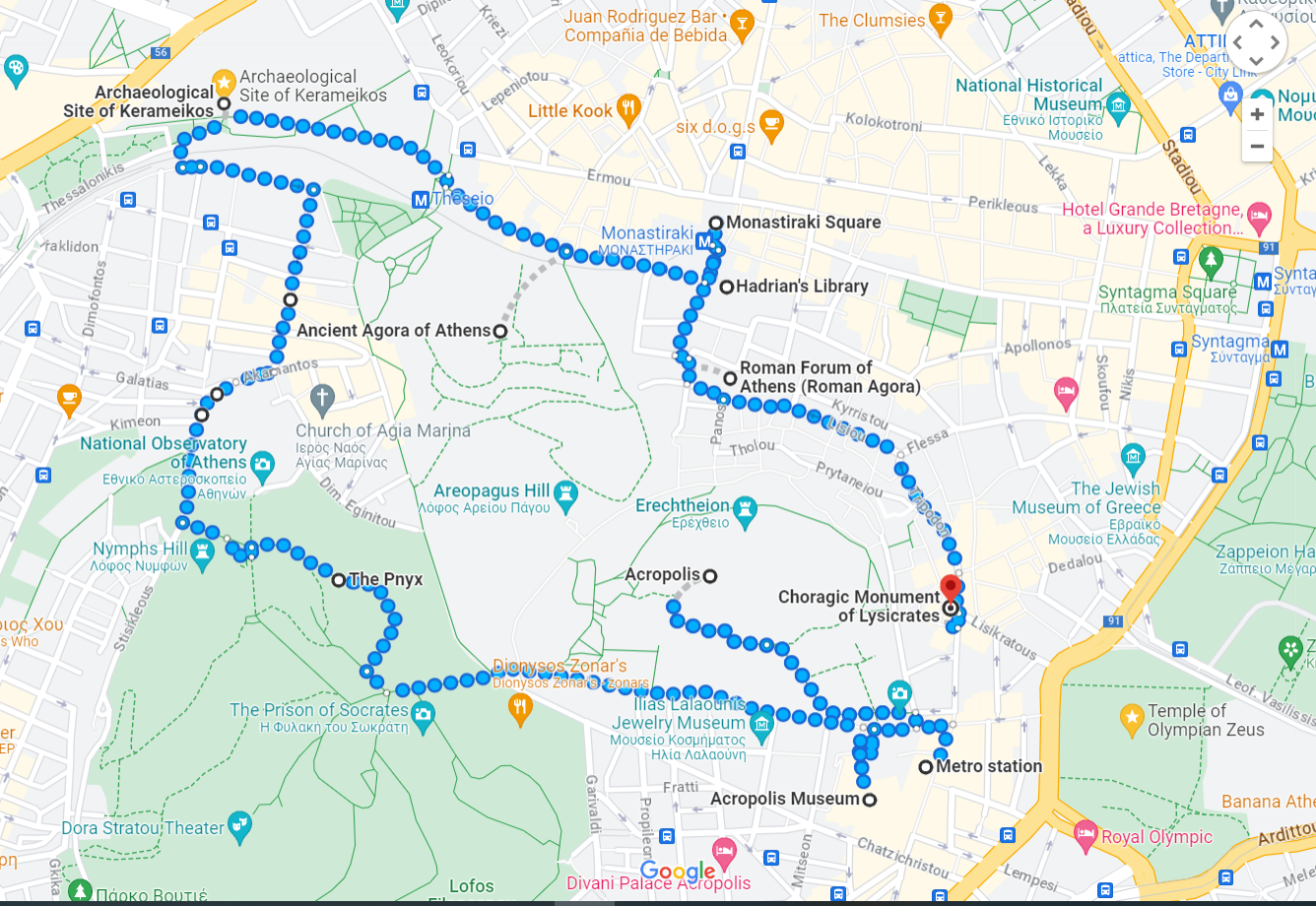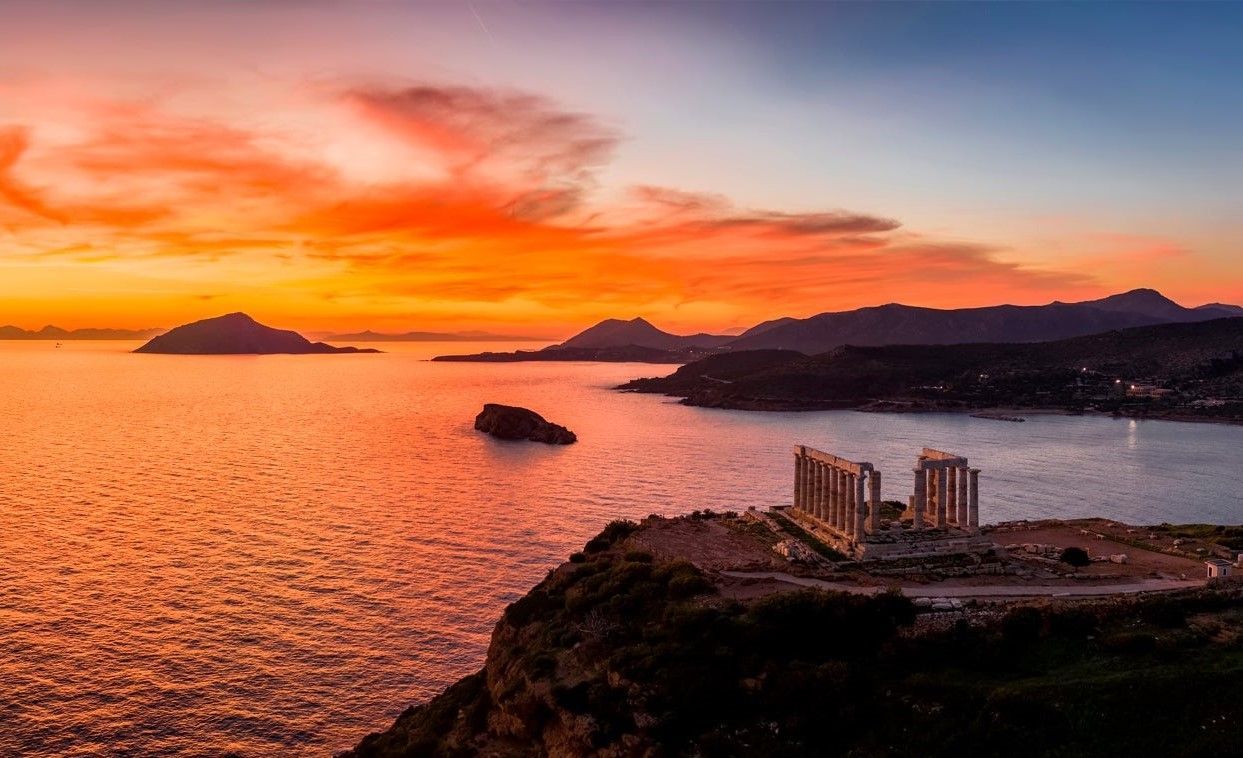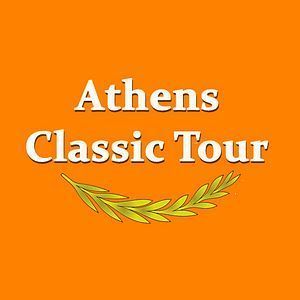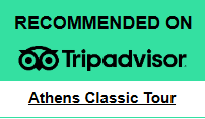Things to do in Athens: Landmarks
Want to see the great landmarks of Athens? Well, a good choice would be to book any of our walking tours, that will introduce this great ancient city to you!
However, if you want to do everything on your own, we give you following what you need to figure out your own itinerary (and budget).
- A list of the most important landmarks / sites
- Estimated minimum visit duration
- Respective ticket costs and booking links (official websites)
- Tips and Resources
This list includes the most important landmarks of Athens,
They are many (17) for one day so we split them it in 2 days (2 routes) . If you have only one day in Athens , choose the Day 1 route (which is on foot only) that covers Acropolis and most of the important ancient sites.
For the Day 2 route , you can use either a combination of Metro and foot, or one of the three tourist buses or a car (see useful links at the end of this post). Read on!
Day 1 route (on foot)

1. Acropolis Hill
The absolute must see landmark for anyone visiting Athens! The ticket includes everything on top of the Acropolis hill, namely:
- Propylaia (the entrance complex)
- Athena Nike Temple
- Erechteion Temple
- Parthenon Temple
and around the hill slopes, including, among others:
- Theater of Dionysus
- Herodeion Odeon
- Areopagus Hill
Minimum visit duration:
1 hour (2 hours in order to see all the sites on top and around)
Tickets: 30 Euros
- Over 65 years (EU): 15 Euros
- Free for youth up to 25 years old (with valid ID or passport) from EU countries
- Free for all youth up to 18 years old from non EU countries
Official online tickets, here
Tip 1:
Purchase your tickets online, especially in the summer period! Selection of specific
time zone visit in the Acropolis is compulsory. Visitors can enter the Acropolis strictly at the time zone they select when they issue their ticket, and should be at the site 30 minutes before the zone they have chosen.
Tip 2: Visit Acropolis either early in the morning (08:00 to 09:00) or late in the afternoon (after 16:30), it is less crowded. Last entrance at 19:00, in peak summer period, and 16:30 in winter period. Backpacks or large bags have to be left at the check-in before entering the Acropolis.
Tip 3: Before you visit Acropolis you can download the
Cosmote Chronos
free app that gives you a great virtual presentation of the Parthenon as it was (along with an A.I. personal assistant, in 5G only, to reply to your questions)! Download here the: Android or iOS
Tip 4: There's an elevator for handicapped people in the Acropolis. Visitors should contact in advance for details telephone numbers: +30 210 3214172, +30 210 9238470. Keep in mind that in many other sites, access may be difficult due to uneven terrain.
Resources
https://www.acropolisvirtualtour.gr/
https://www.history.com/topics/ancient-greece/acropolis
2. Acropolis Museum
Just opposite to the Acropolis Hill, the Acropolis Museum is an archaeological museum focused on the findings of the archaeological site of the Acropolis of Athens. The museum was built to house every artifact found on the rock and on the surrounding slopes, from the Greek Bronze Age to Roman and Byzantine Greece. Accessible for disabled persons.
Minimum visit duration: 1 hour
Tickets:
General admission: 20 Euros
You can buy tickets online, here: https://etickets.theacropolismuseum.gr/?culture=en
For beneficiaries of reduced and free tickets, please check here
Tip 1:
We would suggest that you
first watch the video
(15 mins) that shows the history of the Acropolis (3rd level of the Museum) and then visit all the rest!
Tip 2:
There is a nice restaurant/coffee shop with an amazing view to Acropolis, make yourself a gift!
Resources
https://www.theacropolismuseum.gr/en/
https://acropolismuseumkids.gr/en
https://artsandculture.google.com/partner/acropolis-museum
3. The Western Hills (Muses or Philopappou - Pnyx - Nymphs Hills)
Some of the best things in life are free. So is the area of the Western Hills that comprises of the hills of the Muses (Philopappou), of Pnyx and of the Nymphs.
Pnyx Hill is the most important one, since it is the place where Athenians held their upmost civil right: voting!
Most of the buildings there have been destroyed long ago but the one thing that survives may send shivers down your spine: The Orator's bema (Speaker's stand) where the most prominent Athenian politicians, including Themistocles, Pericles and many others, spoke to the Assembly trying to convince them to support their proposals! So just stand before the bema and think what you would suggest to the Athenians, if you had the chance!
Minimum visit duration: 30 minutes
Tickets: Free entrance
Tip 1: If you are interested in democracy, this is the place to visit (or take one of our tours, to learn more)!
Tip 2: The (old) Athens Observatory, that is very near, offers night tours (60 minutes) that include also star gazing! It's a nice activity for anyone and expecially kids! More here:
https://www.noa.gr/en/public-outreach/visitor-centers/thisseio/
Resources
https://yougoculture.com/articles-virtual-tour/myth/pnyx
https://www.history.com/topics/ancient-greece/ancient-greece-democracy
4. Kerameikos
It is really worth to see this landmark, the cemetery of ancient Athens, since pre-historic times till 5th century A.D. that hosts also a small but interesting museum. Many of the most famous Athenians are buried here. This is also the place where Pericles pronounced his most famous speech, the Epitaph, a milestone in Greek history.
Minimum visit duration: 45
minutes (along with museum visit)
Tickets: General admission: 10 Euros
Resources
https://www.thisisathens.org/antiquities/keramikos-ancient-cemetery
https://www.greece-is.com/kerameikos-a-place-of-transition-2/
https://sourcebooks.fordham.edu/ancient/pericles-funeralspeech.asp
5. Ancient Agora
The Agora (Marketplace) was the heart of ancient Athens! All Athenians spent considerable time on daily basis, in order to buy things for the household, do business, talk about politics, meet their friends to arrange their next "Symposion" etc. It was full of state buildings, along with altars, temples and shrines, fountains, the Odeon, the Library, the ‘Bema’ (speakers platform) and others. It was there where Socrates, Plato and most of the great Athenians walked discussing philoosophical and other issues and it is also the place where Socrates died. It also hosts a museum (included in ticket).
Minimum visit duration:
2 hours (along with museum visit)
Tickets:
General admission: 20 Euros
Information and Official online tickets, here: https://hhticket.gr/tap_b2c_new/english/tap.exe?PM=P1P&place=000000004
Tip 1:
Do not ommit to visit the very interesting museum in the Attalos Stoa (the long building on the left of the entrance).
Tip 2:
Despite Google Maps and other guides show the "Prison of Socrates" to be in Philoppapou Hill, this is a mistake! Socrates died in the prison, the relics of which are at the southwest end of the Agora!
6. Monastiraki - Flea Market
Next to the Agora, Monastiraki is one of the oldest and livilest neighborhoods of Athens. Strolling in the Flea Market is a short journey in the 19th century, while Psirri area was the center of numerous small craft shops that turned out to bars, coffee shops and restaurants.
Minimum visit duration: 30-40 minutes
Tickets: Free
Resources: https://www.thisisathens.org/neighbourhoods/monastiraki-psirri-guide
7. Hadrian's Library
Hadrian, the Roman Emperor, loved the city of Athens and created many buildings, among them the Library that was named after him, on 132 A.D. and the dimensions were 122 x 82 meters. Several important schools of learning and philosophy also occupied the building. It was destroyed during the Herulian invasion of 267 A.D. Included in the combined ticket.
Minimum visit duration: 20-30 minutes
Tickets:
General admission: 6 Euros /
Reduced ticket: 3 Euros
Resources
https://www.worldhistory.org/article/839/the-library-of-hadrian-athens/
https://ancientathens3d.com/hadrians-library/
8. Roman Agora
Constructed in 11 B.C. with the donations of Julius Caesar and Augustus, was dedicated by the People (Demos) of Athens to their patroness, Athena Archegetis. The most interesting building in there is the "Tower of the Winds", built by astronomer Andronikos Kyrrhestes. It's an octagonal building with carvings of the 8 winds that was used for weather and astronomy observations. It had a solar clock and (for cloudy days) an auxiliary hydralic mechanism that produced a sound every hour, just a small example of their technological progress.
Included in the combined ticket.
Minimum visit duration: 30 minutes
Tickets: General admission: 10 Euros
Resources
https://www.worldhistory.org/article/1765/hellenistic--roman-agora-of-athens/
https://www.thisisathens.org/antiquities/roman-agora
9. Plaka
Plaka is the oldest and most picteresque neibourhood of Athens. In many streets cars are prohibited, giving you the opportunity to stroll around peacefully (or almost, since locals move all around with small motorcycles). The Anafiotika is likely the most remarkable section of Plaka with small houses and very narrow streets, exactly the kind of labyrinth you want to lose yourself in!
Minimum visit duration:
60 minutes
Tickets: Free
Resources: https://www.athensguide.com/plaka.html
Day 2 route (Metro and walk or Hop on-Hop off buses)

10. Hadrian's Arch
Built by Hadrian the Arch that bears his name is a remarkable 18-meter marble arch that once separated the old city (city of Theseus) and the new city (city of Hadrian).
Minimum visit duration: 5 minutes
Tickets: Free
Resources: https://www.thisisathens.org/antiquities/hadrians-arch
11. Temple of Olympian Zeus (Olympieion)
Right next to Hadrian's Arch, the temple of Zeus was a magnificent temple, the biggest in Athens, took a few...centuries to be built, since works were abandoned many times, but in the end it was the biggest temple in Athens, with 96 x 40 meters dimensions. Only a few columns remain, however the aura of the location is fascinating.
Minimum visit duration:
20-30 minutes
Tickets: General admission: 20 Euros
Resources: https://www.worldhistory.org/article/815/temple-of-olympian-zeus-athens/
12. Panathenaic Stadium (Kallimarmaro)
The only stadium made of marble in the world was made around 330 B.C. and was used as race track during the Panathinea (religious festival of ancient Athens, while during the Roman era it was used as an arena (the passage that gladiators used is now the entrance to the museum). It was re-built in 1895, with a capacity of 80.000, to host the first modern Olympics (1896) and it's used as the finish of the Authentic Marathon race (November), as the start of the Olympic Torch journey and multiple purposes today. Inside there's a museum that exhibits all Olympic torches and moments from its glorious past!
Minimum visit duration: 30 minutes
Tickets: General admission: 10 Euros / Reduced ticket: 5 Euros / Children up to 5 years free
Resources: https://www.panathenaicstadium.gr/en/home/
13. National Garden and Zappeion Hall
The National Garden is an oasis in the most central place of Athens, right next to Syntagma Square. Completed in 1840 by order of the first king of modern Greece, it is accessible from seven entrances it's home to 7.000 trees, 40.000 bushes and 6 small lakes. Next to it is the Zappeion Megaron (Hall) this most beautiful neo-classical building of 1888 it is connected with some great historical events of Greece, as it was used for the first modern Olympics, as hospital in wartime and the signings of many international treaties.
Minimum visit duration: 30 minutes
Tickets: Free
Resources: https://www.zappeion.gr/en/
14. Syntagma Square (Constitution Square)
The main square of Athens, where you can see the change of the guards. Every hour men of the Presidential Guard, wearing traditional clothes of the Indepedence war, replace the previous in a silent ceremony, in front of the Unknowh Soldier tomb. It's one of the most photographed occasions in Athens. There is also the Parliament in the building that was the seat of Greece's kings and therefore it is the most popular place for demonstrations!
Minimum visit duration: 15 minutes
Tickets: Free
Resources: https://en.wikipedia.org/wiki/Syntagma_Square
15. The Athenian Trilogy (National Library - Academia - Athens University)
Three magnificent buildings consist the so-called Athenian Trilogy. The National Library (now a reader's hall, since it has moved to its new installations in the SNFCC (https://www.snfcc.org/en), the Academy of Athens and the first University of Athens are a must-see as they are great examples of neo-classical architecture!
Minimum visit duration: 30 minutes
Tickets: Free
Resources: https://www.greece-is.com/athenian-trilogy-perfection-form/
16. National Archeological Museum
To put it simply, it's the number 1 Museum of Greece and one of the most imprortant in the world (even though it is not that famous)! With 11.000 artifacts from all historical periods of Greece, it's a must see for all visitors. Among them, statues of amazing beauty like the bronze Poseidon, the "Face of Agamemnon" and the "Antikythera Mechanism" the oldest "analog computer" in the world (Don't worry Indy, the "Dial of Destiny" is safe here!).
Minimum visit duration: 2 hours
Tickets: General admission: 12 Euros (Apr - Oct)
65+ years old from EU: 6 Euros
Up to 25 years old from EU: Free
Up to 18 years old from non EU: Free
Official online tickets: https://hhticket.gr/tap_b2c_new/english/tap.exe?PM=P1N
Tip 1: Facilities for disabled people. Upon your arrival contact (+30) 213 214 4851-4856 in order to enter the museum.
Resources:
https://www.aspectsofbeauty.gr/en/
17. Aristotle's Lyceum
If you have time, you may visit the school of Aristotle (Lyceum), before you head for the last landmark (Lycabettus Hill). Founded in 335 BC it is also called Peripateting (Walking) School, since he liked to teach while walking.
Minimum visit duration: 1 hour
Tickets: General admission: 5 Euros
65+ years old from EU: 3 Euros
Up to 25 years old from EU: Free
Up to 18 years old from non EU: Free
Official online tickets: https://hhticket.gr/tap_b2c_new/english/tap.exe?PM=P1P&place=000000007
Resources:
https://www.thisisathens.org/antiquities/aristotles-lyceum
https://www.britannica.com/biography/Aristotle/The-Lyceum
18. Lycabettus Hill
Last but not least, this hill is the perfect Instagram spot for a good reason! At the end of the tiresome Day 2 route, head to the Hill that provides the best 360 degrees view of Athens. If tired, skip the steps and take the funicular (cable car that is INSIDE the hill) and take the best photos of Athens at night!
Minimum visit duration: 40 minutes
Tickets: Free for Lycabettus / 12 Euros for the funicular (with return)
Resources:
https://www.thisisathens.org/sights/lycabettus-hill
https://www.greece-is.com/find-teleferique-lycabettus-cable-car/
Last tips
The above are the most important landmarks of Athens, but not all. (You can check our blog posts for more).
The best way to see them all is to use the hop-on / hop-off buses that take you next (or very close) in all these landmarks.
There are three such companies in Athens, see their websites below:
https://www.citysightseeing.gr/en
https://www.sightsofathens.gr/
https://www.athensopentour.com/
Alternatively, you can use the Metro and your feet!
Find info for the Athens tickets (for all means of transport, Metro, buses, tram etc), here: https://www.oasa.gr/en/visit-athens/
Enjoy your stay in Athens!!!








